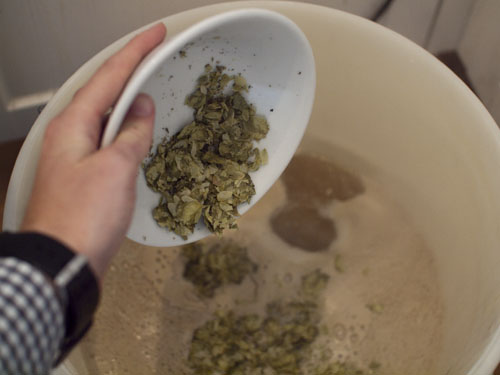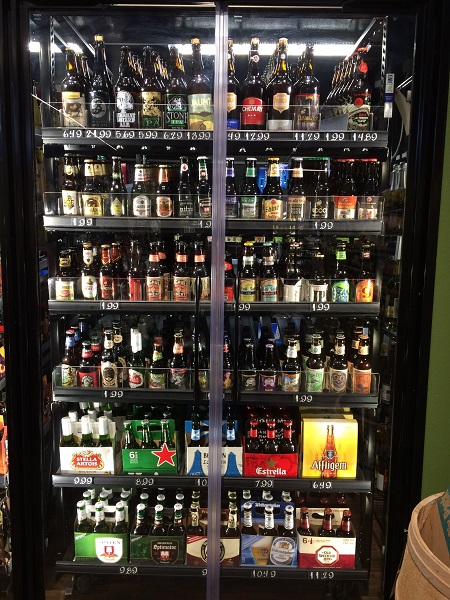Understanding Beer Ingredients For Beginners
When you start out making beer it can be daunting with the amount of beer ingredients on offer to know what one, or any of them are going to do to your home brew. There are such a wide varieties of malts, hops and yeast alone that will all add something different to each beer. That’s before you even start experimenting with spices, herbs, fruits and other flavourings.
You can take the time to research what a particular malt for example tastes like and the flavour it will contribute. That is a starting point to give you an idea but it really doesn’t do justice to how flavours work in a beer. The only way around this in my book is to experiment and start using them.
If you have only brewed once or twice or maybe never then doing something like what I am about to tell you will give you a good understanding of brewing ingredients as well as a myriad of different recipes to try. Also if you brew all grain you can do the same thing and really get a feel for your hops and malts.
Table of Contents
Taste And Smell Your Beer Ingredients!
This may sound obvious but I think it may be overlooked by a lot of brewers. If you do chew all your grains before using them carry on, if not then start doing it.
I believe everyone must open a bag of hops and just stick their nose straight into it. This is a natural home brewer behavior. Firstly you get an idea of how aromatic the hops are and the kind of aromas such as lemon, herbal, earthy and fruity. Secondly you can ensure the hops are fresh, if they give of a cheesy kind of stale smell you probably shouldn’t use them.
Tasting malts is something I do a lot. Any new variety of malted grain I come across I pick up a few grains and chew. This practice isn’t going to tell you exactly how the grain will taste in the beer, but it will help. Dark roasted grains for example will always taste a bit more roasty or toasted than when they are in a finished beer. You will however be able to pick up the chocolate flavours, coffee, biscuit and so on.
If you don’t already do these things, this is the first qualitative test for any beer ingredients you need to start doing.
Single Hopped Beers
Out of all the beer ingredients, hops are so subtly diverse, it seems like there is a never ending choice of hops. There are so many varieties that knowing one from another can be difficult. Especially because new hop varieties are being introduced all the time, almost every year at the moment.
If you have never used say Nelson Sauvin before then how do you know what it’s going to bring in terms of flavour or aroma. You could go out looking for commercial examples that use that hop or the method I prefer is to brew your own.
A good way of doing this is to split batches of wort and to throw in different hops for each boil, this would of course require two pots to boil in. If not just brew the same beer and use different hops, this way you will have the same malt bills so the hop character is easily going to shine through. A good starting point is to work from this single hop recipe from Brulosophy.
If you are an extract brewer then this is something that’s so easy to do to tailor your recipes.
Beer Style: Single Hopped Pale Ale
Batch Size: 19 Litres
Original Gravity: 1.045
Final Gravity: 1.012
ABV: 4.3%
Your choice of malts and grains.
Follow something like this hopping pattern with your chosen hop variety keeping the bitterness at somewhere around 40 – 50 IBUS:
¼ for 60 mins
¼ for 20 mins
½ for the end of the boil
Optional: Dry hop
If you have brewed beer from a kit, one of those ones that have a couple of tins you mix with water, there is no reason you can’t experiment with dry hopping the beer during fermentation. There’s nothing wrong with it beer kits but I urge you to try something like this and get to grips with ingredients.
Splitting Fermentations
One thing you need to start thinking about as a beer ingredient in it’s own right is yeast. If you have a couple of fermenters or carboys lying around then a good way to experiment is splitting the wort between these and using different yeast strains. There are literally hundreds of yeast strains available especially liquid yeasts and each will have a completely different effect on your finished beer. The great thing is you’ll be able to do side by side tastings and know that the primary difference in flavour and aromas will be the yeast strain.
Dry hopping is another technique you can use to find the aroma characters of different hops, split you batch into separate fermenters after primary and rack onto your separate dry hops
Single Type of Grain + Base Malt
Special malts are a great beer ingredient to experiment with. This is great for extract brewers because it’s so easy to steep grains in a grain bag before adding Malt extract and hops. You could use 400 grams of chocolate malt for example and steep for 30 minutes before resuming brewing as normal to really get a feel for different malts. Make sure though you use a speciality grain that can be steeped all grain brewers can of course use whatever malt they want alongside pale malt, wheat or lager malt.
I have heard that Stones Arrogant Bastard is a single base malt plus specialty malt beer which uses Special B, a type of crystal malt so it just goes to show, you can have some real complexity in these single malt beers.
At the end of the day, you can spend time looking at vague notes in brewing books and online or you can get involved and experiment, try out new things, new beer ingredients and new recipes. See for yourself what each ingredient brings to the table then use that knowledge to make better beer. The best way to improve your brewing skills and techniques is to keep on brewing.
Sampling As Many Beers As Possible
This is a real opportunity for any brewer really. You can research most beers or even just check the label to find a list of hops and malts used. It’s a no brainer to try new beers whenever you find them and helps to get an idea of hop aromatics and malt profiles without having to brew anything yourself.







Leave a Reply
Want to join the discussion?Feel free to contribute!